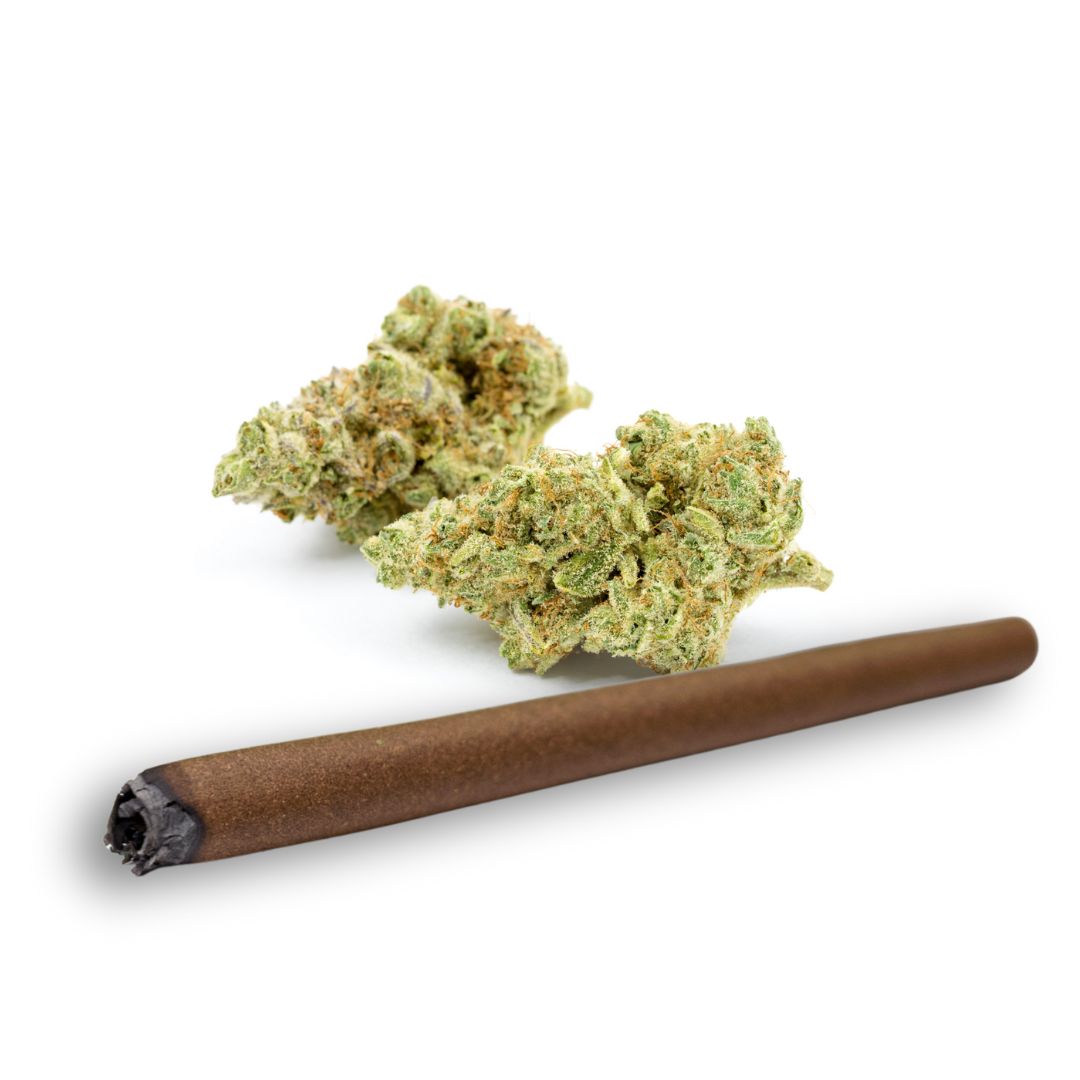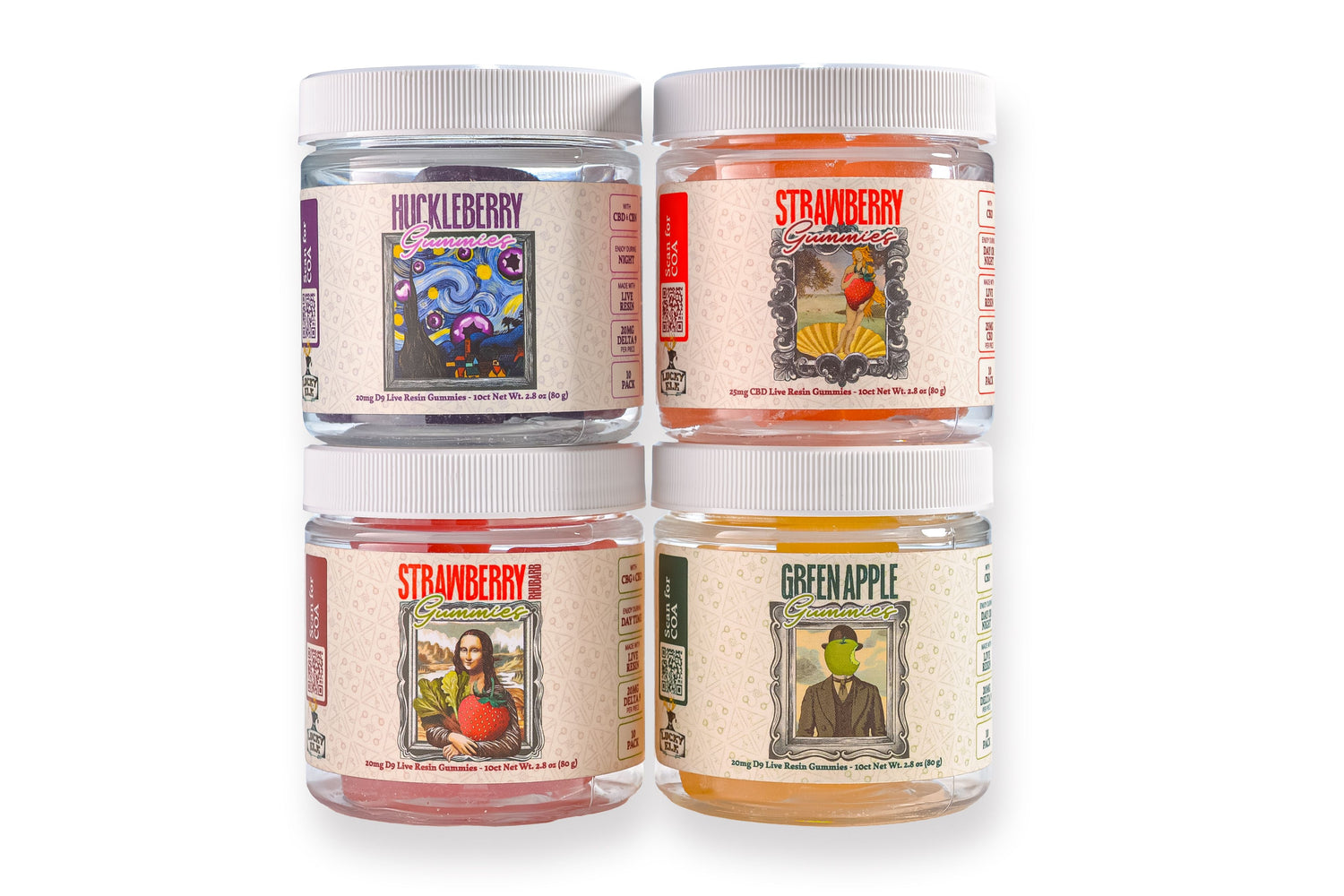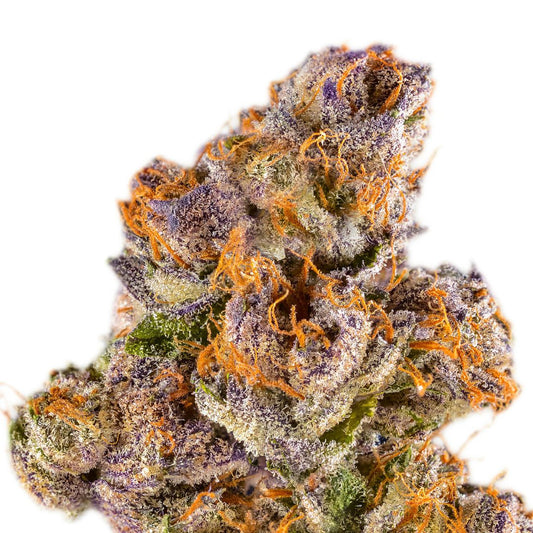THCa Live Rosin (a.k.a. live hash rosin) is the liquid gold of cannabis concentrates, particularly popular among enthusiasts for its potency and flavor. The ‘live’ refers to the fact that this premium product is made with fresh frozen plant material. The goal of this method is to preserve the full spectrum of cannabinoids and terpenes found in cannabis while eliminating the need for potentially harmful solvents. This brings us to the second major benefit of live rosin: it’s a solventless extraction.
Shop THCa Live Hash Rosin
How to Make Live Rosin
🌱 Selecting High-Quality Cannabis: The process begins with selecting high-quality cannabis flower. It's essential to choose a strain with a rich terpene profile and potent cannabinoid content, as these factors heavily influence the final product's flavor and effects.
🥶 Freezing the Fresh Plant Material: The ‘live’ aspect of live rosin involves freezing the freshly harvested cannabis plant material immediately after harvest. This helps to preserve the volatile compounds, including terpenes, that are responsible for the strain's unique aroma and flavor.
🧱 Making Full-Melt Hash: The next step is to turn the frozen material into the highest grade of hash, known as full-melt hash, or bubble hash. This part is done with an ice water extraction process; it’s possible to DIY using filter bags, but the best bubble hash is made with state-of-the-art equipment with precise wash cycles, agitation settings, and filtered water. Essentially, the hash maker wants to capture the trichome heads while filtering plant material and contaminants out.

🔥 Applying Heat and Pressure: The full melt-hash is placed between two metal plates of a specialized rosin press. These plates are heated to a precise temperature, typically between 160°C to 220°C (320°F to 428°F), depending on the desired outcome. Pressure is applied to the hash, causing the trichome heads to rupture and release their precious content.
🥇 Collection of Rosin: As the pressure and heat are applied, the cannabinoids and terpenes are squeezed out of the trichomes and onto a collection surface, such as parchment paper. The resulting extract is live rosin, which contains a wide range of cannabinoids and terpenes in a highly concentrated form.
Read the Full Blog: A Step by Step Look at Our Solventless Process
Live rosin is highly regarded for its potent and flavorful profile, which comes from the preservation of the plant's terpenes. The absence of solvents in the extraction process makes it a safer and more appealing option for those who prefer a more natural and pure cannabis concentrate. However, the process can be labor-intensive and may yield less product compared to other extraction methods, which can make it more expensive.
Making live hash rosin on a low temp press is a slow, labor intensive process with relatively low yields for extraction. It is considered the ‘Liquid Gold’ of concentrates, and generally comes with a price tag to match.
'If you're looking to try connoisseur-grade live rosin, check out our latest Solventless Collection drops--each made with full melt bubble hash to maximize terpene expression.'
How to Use Live Rosin
Using THCa live rosin is all about preserving its delicate terpene profile and maximizing potency. Whether you're a seasoned dabber or new to concentrates, these best practices will help you get the most out of your experience:
🌡️ Choose the Right Temperature
For the best flavor and smoothest effects, aim for low-temperature dabbing—ideally between 480°F and 550°F. Higher temps may produce bigger clouds, but they can burn off terpenes and ruin the rosin's complexity.
🧪 Use a Clean Dab Tool and Surface
Always use a clean dab tool to scoop your rosin and a well-maintained banger or nail. Residue from past dabs can distort the flavor and impact the effects of your live rosin.
❄️ Store It Properly
To keep your rosin fresh and flavorful:
Short term: Use an airtight glass rosin container, stored in a cool, dark place.
Long term: Vacuum seal and freeze. Just be sure to let it return to room temperature before opening to avoid condensation and terpene loss.
Read the Full Blog: Storing Cannabis Concentrates
🌬️ Let Your Rig Cool Between Dabs
If you're taking multiple hits, let your device cool slightly between dabs to avoid overheating the oil. Overheating can degrade the cannabinoids and lead to a burnt taste.
✅ Optional: Try a Rosin Cart
For convenience on the go, try live rosin cartridges. They offer a solventless dabbing experience in vapor form, making them perfect for flavor-focused consumers who prefer a portable format.
Read the Full Blog: Getting the Most from Your Rosin Cart
Frequently Asked Questions
What is THCa live rosin?
THCa live rosin is a solventless cannabis concentrate made by pressing bubble hash—crafted from fresh frozen cannabis flower—using only heat and pressure. It preserves high levels of THCa (tetrahydrocannabinolic acid), which converts into THC when heated. The result is a flavorful, potent dab with zero solvents and maximum terpene expression.
What’s the difference between live rosin and other types of rosin?
Live rosin is made from fresh frozen flower, while regular rosin typically comes from cured flower or hash. The fresh-frozen approach preserves more terpenes, resulting in a louder aroma, richer flavor, and smoother vapor. Live rosin is often considered the top tier of solventless concentrates.
Is THCa live rosin stronger than other concentrates?
Potency varies by batch, but THCa live rosin is generally quite strong—often testing in the 70–85% THCa range. Because it contains the acid form of THC, it’s non-psychoactive until heated. Once dabbed or vaporized, the effects can be intense, especially when paired with rich terpene content.
What’s the best way to store live rosin?
For short-term use, keep your rosin in an airtight glass container stored in a cool, dark place. For long-term storage, vacuum-seal the rosin and freeze it—but let it thaw to room temperature before opening to avoid condensation. For more tips, check out our complete guide to concentrate storage.
How do I use THCa live rosin?
Live rosin is best consumed through dabbing with a quartz banger or e-nail, or using a high-quality dab pen. Heat the surface to around 480–550°F, apply a small amount of rosin, and inhale gently to enjoy full-spectrum flavor and smooth effects. You can also find live rosin cartridges for solventless dabs on the go.
Now that we understand the basics, let’s dive into the process a little deeper and answer some questions you might have…
What is Fresh Frozen?
The term ‘fresh frozen’ refers to the process of immediately freezing fresh cannabis plant material immediately after harvest. This ensures the highest concentration of cannabinoids and terpenes are captured for concentrate making. By contrast, the conventional air drying process will result in the loss of some cannabinoids, and especially the more volatile terpenes.
What is Full-Melt Hash?
Full-melt hash is a term reserved for the highest grade of hashish. Its name comes from the fact that when heated, it transforms into a melty liquid. production of full-melt hash primarily involves an ice water extraction process, often known as "bubble hash." This approach is designed to minimize impurities and maximize filtration, ultimately leading to a product that approaches a state of purity. While it's theoretically possible to produce full-melt hash using traditional dry-sifting methods, it proves considerably more challenging.
Full-melt hash represents the pinnacle of hashish quality. It contains solely trichome heads, which contributes to its enhanced psychoactive nature due to its rich rosin concentration. It boasts a smooth flavor and a refined throat hit, with a little going a long way.
Read the Full Blog: Understanding Hash Grades
Live Rosin vs. Live Resin
Live rosin is made using a solventless extraction process, while live resin typically employs hydrocarbon solvents like butane or propane to extract the cannabinoids and terpenes from the frozen plant material. Both concentrates are made from fresh frozen cannabis. For more information, read our Quick Guide to THCa Concentrates.
In general, live rosin is lighter in color and smoother in texture. This isn’t always true, however; sometimes these the two types of concentrates can be impossible to tell apart visually.









